Peter Paul Rubens in 10 Paintings
A Baroque master and portraitist of the royals, Peter Paul Rubens is probably best known for his often drama-filled religious and mythological...
Anna Ingram 30 May 2024
Although he is best known for his religious themes, Francisco de Zurbarán created wonderful still lifes that stand out for their simplicity and, at the same time, for their spiritual aura. Here we present to you 5 still lifes by the Baroque Spanish master you need to know.
Francisco de Zurbarán (1598–1664) was one of the most important artists of the Spanish Baroque. He received numerous commissions from the Catholic Church to decorate monasteries and churches with his works. Moreover, he became a leading exponent of the Counter-Reformation style, being known especially for his religious-themed works. Although they are much less known, here we present five still lives that you did not know were painted by him.
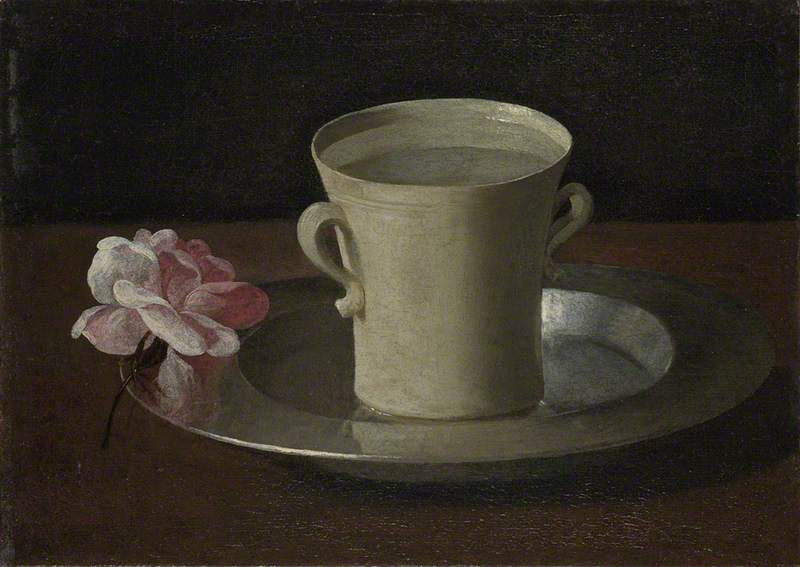
Francisco de Zurbarán, Cup of Water and a Rose on a Silver Plate, 1630, The National Gallery, London, UK.
Zurbarán managed to give spirituality, transcendence, and mysticism to the most everyday details. In the painting, A Cup of Water and a Rose on a Silver Plate he placed in the center of a table a ceramic cup of water on a silver plate and a bloomed rose without thorns on the edge of the plate. Despite being a very simple work of composition, Zurbarán takes care of even the smallest details. The glass and petals of the rose are delicately reflected on the silver plate, while the shadow cast by the plate expands on the table. Both the background and the table have very dark colors, both further highlighting the strong color of the rose. Zurbarán also applies the games of light and shadow so typical for the Baroque.
While the elements that make up the still life seem like everyday elements at first glance, they may contain a more spiritual meaning. Both the glass of water and the rose would refer to the Virgin Mary and her purity, giving to the simplest elements the deepest and most transcendent meaning.
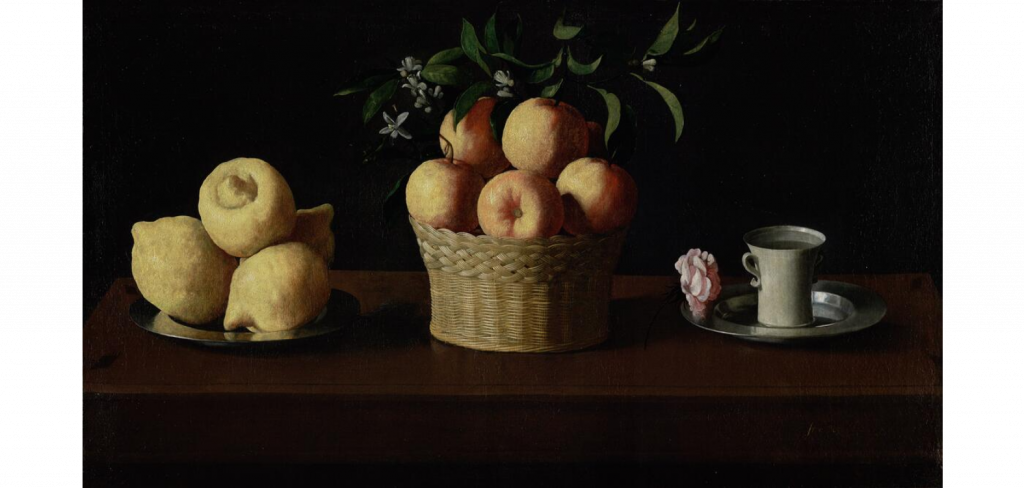
Francisco de Zurbarán, Still Life with Lemons, Oranges and a Rose, 1633, Norton Simon Museum, Pasadena, CA, USA.
Still lives were one of Zurbarán’s favorite themes, Still Life with Lemons, Oranges, and a Rose is the only one signed by the artist. A silver plate with four lemons, a basket of oranges, with a branch still in bloom, a plate with a cup of water, and a rose on the edge of it are arranged linearly on the table. The intense colors of the fruits and the rose stand out against the dark background. The material qualities of the work are undoubted since Zurbarán managed to convey the rough texture of the citrus fruits, the delicacy of the flowers, the details of the basket, and the reflections on the metal.
In addition to the beauty of the details, in a century marked by the Counter-Reformation, the work could also be understood as an allusion to the Holy Trinity or the purity of the Virgin transmitted through the flowers and the cup of water.
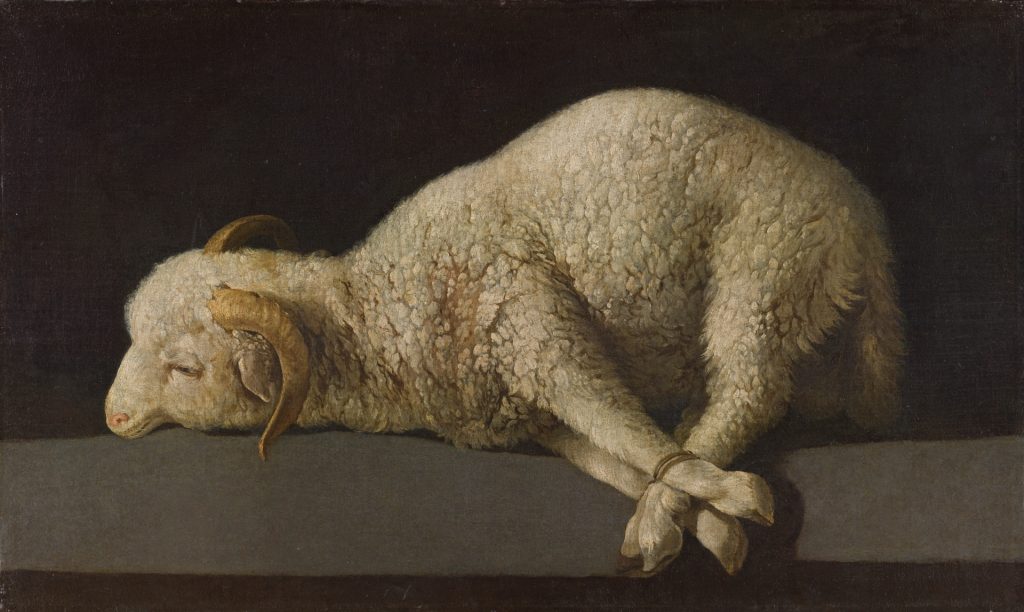
Francisco de Zurbarán, Agnus Dei, 1635-1640, Museo del Prado, Madrid, Spain.
Agnus Dei. It is perhaps Zurbarán’s still life with the clearest religious motif. While it looks like the lamb is going to be sacrificed for a feast, the scene contains a deeper meaning. The small animal, still alive, with its legs tied, adopts a sacrificial attitude of submission, almost like that of a martyr. The title Agnus Dei, Lamb of God, is a clear allusion to Jesus and his sacrifice for humanity. Again, the drama of the scene is accentuated by the contrast between the white fur of the animal and its enormous detail with the black background.
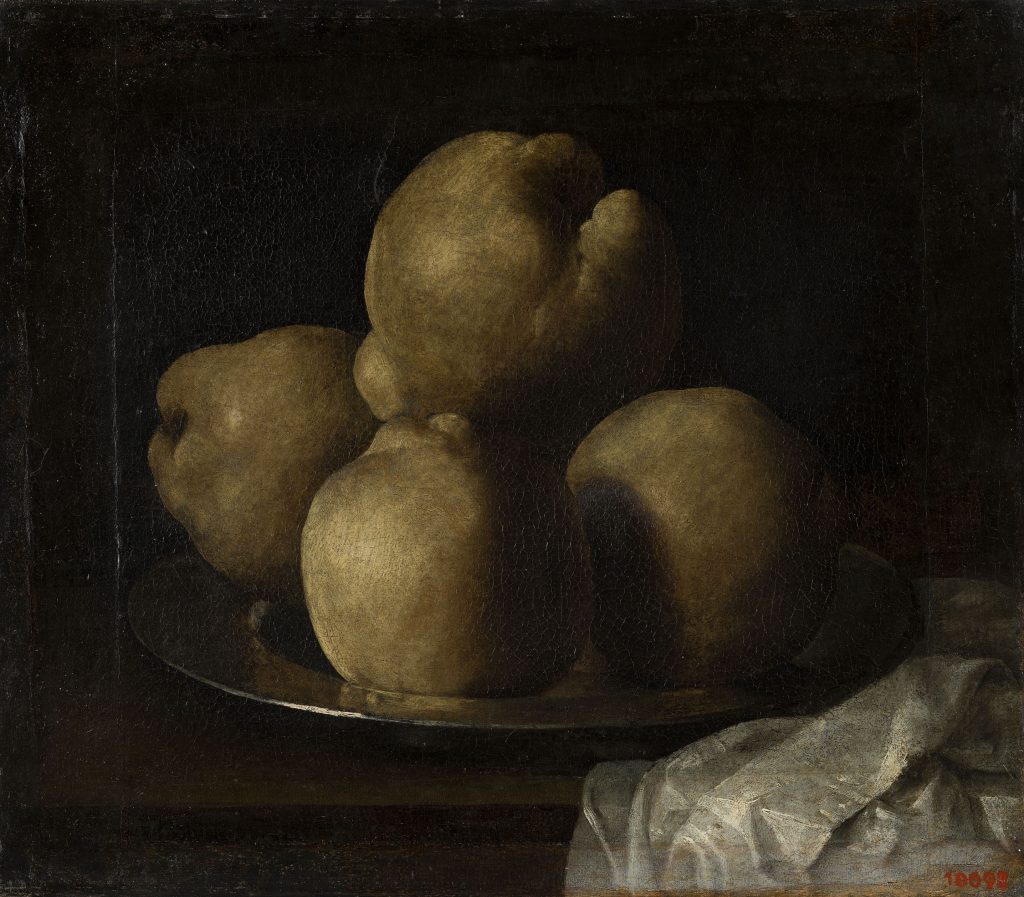
Francisco de Zurbarán, Still Life with Quince Plate, 1633-1635, Museu Nacional d’Art de Catalunya, Barcelona, Spain.
In Still Life with Quince Plate, Francisco de Zurbarán creates a masterpiece from such a simple detail: four quinces on a silver plate. It could be said that this work is typically representative of the Baroque. The strong color of the quinces stands out against the dark background. In addition, the artist designed the lights and shadows, placing the focus of light to fall on some of the fruits while others remain in the shadow. Above the table, we find a white cloth. The artist captured the meticulous detail of the wrinkles of the fabric, transmitting the movement of the light material.
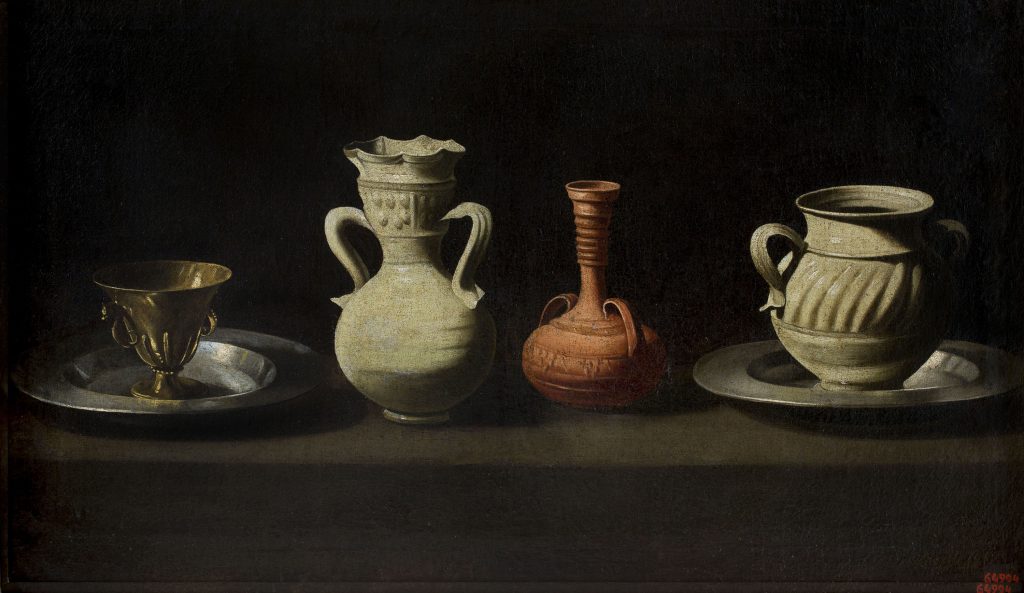
Francisco de Zurbarán, Still Life with Pots, 1650-1660, Museu Nacional d’Art de Catalunya, Barcelona, Spain.
Although it is an atypical still life, without fruits or flowers, this work is one of Zurbarán’s best-known ones. The artist arranges vases, jugs, and cups in a simple, frontal, and hieratic way on the table. The quality of the work lies in Zurbarán’s ability to convey the materialistic and volumetric qualities of objects. The clarity of the painting even allows us to distinguish the different materials of which they are made: ceramic, terracotta, or metal. The work is not overloaded, but instead, the arrangement of the objects transmits order and serenity.
We hope that thanks to these five still-life paintings, you will fall in love with Francisco de Zurbarán’s works as I did!
DailyArt Magazine needs your support. Every contribution, however big or small, is very valuable for our future. Thanks to it, we will be able to sustain and grow the Magazine. Thank you for your help!